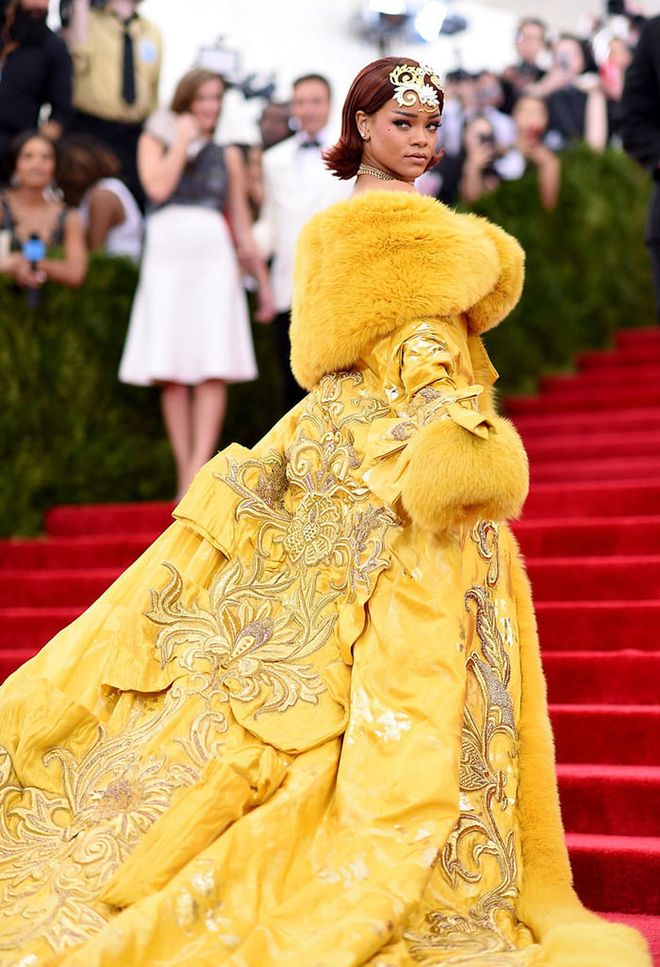Designer Talk: Here's What Guo Pei Really Feels About Asian Fashion
The Asian couturier talks about her royal inspirations and the rising importance of Asian fashion ahead of her show at Singapore Fashion Week 2016

With close to 30 years in the industry under her belt, couturier Guo Pei has been called China’s foremost fashion designer. Her designs are deeply rooted in Chinese historical costume and art, but her appeal and thoughtful outlook on fashion are 100% global. Prior to her show at Singapore Fashion Week 2016, BAZAAR Singapore talked to the designer about her inspirations for the collection, the rising importance of Asian fashion and that Rihanna dress.
Harper's BAZAAR Singapore: Can you tell us more about the collection we're going to see at this year's Singapore Fashion Week. What inspired the collection?
Guo Pei: What I will show on the coming Singapore Fashion Week is the Courtyard series. These are my most thoughtful designs ever. My design inspiration came from court culture, through design elements from traditional Chinese culture and its most unique pattern — the Phoenix. The Phoenix is a legendary ancient Chinese bird, the ancient symbol of Chinese empresses and the most noble representation of women. I think women should be noble and elegant, be tough and have a strong heart. Inspired by the Phoenix, combined with the Western grass grain, palace ornamentation and a large number of flower patterns, is my understanding and expression of female beauty.
HBS: Your name is now closely linked to Rihanna, thanks to the jaw-dropping yellow robe-gown hybrid she wore to the Met Gala 2015. How do you feel about the association?
GP: I thought this was a very fateful partnership. When Rihanna's team contacted me, I was not sure she could really wear the 40kg look, and I asked her stylist if she would be able to walk at all. Her stylist said: for beauty, she can overcome all difficulties. In fact, she did, and I was so shocked. Rihanna expressed most vividly what I want my clothes to convey: gorgeousness and self-confidence. As a designer, I’m used to just focusing on my work, and hoping that my work will reach people on its own. But after Rihanna wore my Yellow Queen outfit, I am increasingly aware of the power of celebrity. They give the work a different angle, and help get it out there to the public. So, I think that tasteful, very fashionable stars, they can often become designer muses, or a fashion promoter/leader. I hope to collaborate with more fashion superstars, who will show my work off in their own style.

Photo: Getty
HBS: While many people have called that look iconic and daring, it also popped up in tons memes and parodies. How does it feel to have created something so polarizing?
GP: As a designer, your work is judged by everyon., I think is a very natural thing. Like with actors: part of your acting, your interpretation of the character, is also open to the audience to judge. I devoted a lot of energy, working hours and effort to making the Yellow Queen outfi., I want to express an infinite pursuit of beauty. At the Met Gala, when I first saw Rihanna’s take on it, I just found her so goddess-like, I was awestruck, she brought such a different quality to it than what I imagined while designing.
When the Yellow Queen outfit was spoofed by the media, my first reaction was surprise that the imaginations of today’s youth have such a strong sense of participation. Because of them, the Yellow Queen dress is known around the world. In the United States I’ve participated in three large-scale exhibitions, one in Paris, and now one in Singapore. I think no matter how much something is spoofed, if something truly has beauty and artistic value, it will still get its due recognition from people who love art.
HBS: You were one of the few Chinese designers featured in the Met’s 2015 exhibition, China: Through the Looking Glass. What are your thoughts on that?
GP: It was a dream of mine to be featured in the exhibition. I am very fond of China: Through the Looking Glass, because every year the Metropolitan Museum Costume Institute selects pieces from designers of the highest standard, from McQueen to Karl Lagerfeld, so the fact that my work was chosen was such an honour. In fact, only two Asian designers participated in the exhibition, and two works were selected, which fully proved that our country's fashion and garment technology is at an international level. This is also a recognition of the couture spirit and craftsmanship I have always striven to put in my work, and it is also a recognition of the traditional Chinese culture as presented through my designs.

Photo: Getty
GUO PEI
HBS: Do you feel that a global prejudice against or dismissal of Asian fashion and aesthetics still exists? Why so?
GP: I have personally never felt this so-called prejudice and contempt. In fact, as early as the last century, during the '60s and '70s, Japan was a very prominent representative of Asia in both the fashion and beauty industries. Their brands and their designs were embraced and recognized by the world. Now, South Korea is on the rise, and Hong Kong remains an important fashion city in the region. I think Asian design is viewed quite fairly.
By Ryan Sng
GUO PEI
GUO PEI
GUO PEI
GUO PEI
GUO PEI